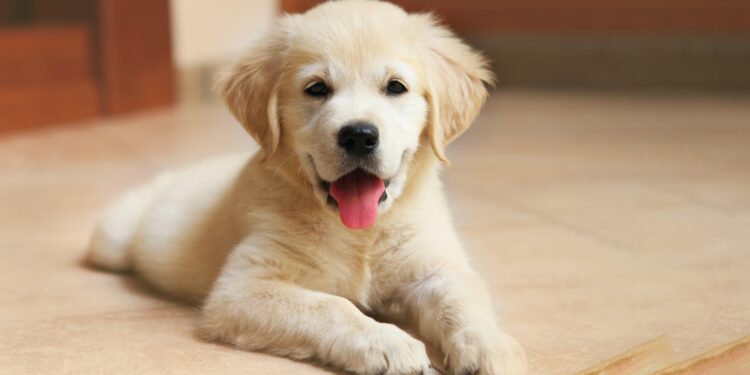Table of Contents
The Stain on My Professional Pride
I have a PhD in animal behavior.
I’ve spent years studying the intricate neurobiology of canine cognition, publishing papers on everything from attachment theory to the dynamics of social learning.1
I’m the person friends and family call when their dog develops a new quirk.
Yet, a few years ago, I faced a failure so profound it made me question the very foundation of my expertise.
I failed to potty train a foster dog.
His name was Buster, a scruffy terrier mix with eyes that held a universe of hope.
I brought him home armed with the full arsenal of “best practices”—the same advice I’d given to countless clients.
We had a military-grade schedule for potty breaks.3
We used a perfectly sized crate, introduced with all the positive fanfare of a surprise party.5
Every successful trip outside was met with high-value treats and praise worthy of a Nobel laureate.7
And still, the accidents happened.
Puddles appeared in the moments my back was turned.
I’d find them behind the sofa or in the corner of the dining room, small monuments to my inadequacy.
My professional confidence curdled into a familiar, gut-wrenching frustration—a feeling that many new dog owners know all too well.
It’s a frustration so potent that incomplete housetraining is a leading cause for dogs being returned to shelters, a heartbreaking outcome that strains family relationships and shatters the human-animal bond.9
After three weeks of escalating stress for both of us, the foster agency and I made the difficult decision that my home wasn’t the right fit.
The day they came to pick up Buster, I felt a shame that was deeper than just a stain on the rug.
It was a stain on my professional pride.
I had followed every rule in the textbook, and not only had I failed, but I had no idea why.
That failure became an obsession.
It forced me to dismantle everything I thought I knew and sent me searching for an answer that wasn’t in any standard dog training manual.
The Myth of the Machine: Why Standard Potty Training Fails Us
My initial approach, and the one prescribed by most conventional wisdom, is what I now call the “Command-and-Control” model.
It’s an approach that treats the complex, emotional process of housetraining like a simple engineering problem.
It operates on a fundamentally linear, mechanical premise: if an owner provides the correct inputs, the dog, like a well-programmed machine, will produce the correct output.
This model is built on a few core, and as I discovered, deeply flawed assumptions:
- The Dog as a Simple System: This view reduces the dog to a set of basic algorithms. It leverages the “den animal” instinct, assuming a dog will not soil its crate if managed correctly.6 It relies on classical conditioning, where a schedule plus a reward should equal a clean floor.4
- The Owner as a Neutral Programmer: The model assumes the owner is a dispassionate, perfectly consistent trainer, merely executing the steps of the program without their own emotional state affecting the outcome.
- Accidents as “Programming Errors”: Within this framework, an accident is seen as a bug. The cause is either a flaw in the dog’s “hardware” (a medical issue) or, more commonly, an error in the programming—the owner wasn’t supervising closely enough, missed a scheduled break, or was inconsistent with rewards.3 This is why so much advice culminates in “watch your dog more closely” and why punishment, even a frustrated “No!”, feels intuitive. It stems from the belief that the dog “knows better” and has willfully violated the program.6
The problem with this mechanical model is that it ignores the dynamic, living nature of the human-dog relationship.
It fails to account for a critical concept from the world of systems science: the system fights back.
In complex systems, interventions designed to solve a problem can trigger counterintuitive, negative effects from other parts of the system.15
When an owner, operating under the Command-and-Control model, responds to an accident with frustration and increased rigidity, they are not simply correcting an error.
They are introducing a powerful new variable—stress—into the system.
The dog doesn’t learn, “I should only pee outside.” It learns, “Peeing in front of my human is a high-stakes, stressful event”.8
This anxiety becomes part of a destructive feedback loop.17
The anxious dog, now afraid to eliminate in your presence, may start hiding to go potty or stop giving clear signals altogether.9
The owner’s attempt to clamp down and control the outcome paradoxically makes the system more unstable and
increases the likelihood of future accidents.
I wasn’t failing to program Buster; I was creating a system so fraught with anxiety that success was impossible.
The Epiphany: It’s Not a Checklist, It’s a Dance
My breakthrough didn’t come from a dog training seminar.
It came late one night while I was reviewing research for a paper, buried in articles on Dynamic Systems Theory (DST), a field that studies how complex, multi-part systems organize themselves.15
Reading about everything from weather patterns to flocking birds, I had a sudden, powerful realization: a human and a dog trying to figure out potty training
is a complex dynamic system.
DST offers a completely different way of looking at the problem.
Instead of a simple, linear machine, it sees a collection of interacting elements—the dog’s biology, the owner’s emotional state, the physical environment, the feeding schedule—that all influence each other in a constant, flowing exchange.19
The key concepts that changed everything for me were:
- Self-Organization: In a dynamic system, order emerges from the interactions between the parts. It is not imposed by a central controller.19 A perfectly potty-trained dog isn’t one that has been successfully “programmed.” It’s one that exists within a healthy, stable system where the desired behavior naturally and reliably emerges.
- Attractor States: Systems tend to settle into stable, repeating patterns of behavior called “attractors”.19 An accident-free home is a desirable attractor state. But, as I learned with Buster, a cycle of hidden accidents, owner frustration, and mutual anxiety is
also a very stable, albeit miserable, attractor state.
The goal, I realized, is not to “train the dog” but to stabilize the system.
We don’t need to fix a “broken” dog.
We need to gently adjust the core parameters of the entire human-dog system to guide it away from the “accident” attractor and toward the “successful partnership” attractor.
This led me to a new, central analogy that now guides all my work: potty training is not about following a checklist.
It’s a Behavioral Dance.
Think about it.
In a dance, you don’t program your partner.
You communicate.
You lead, you follow, you respond to their movements, you feel their rhythm, and you adjust your own steps accordingly.
Success isn’t about one partner perfectly executing a rigid script; it’s about the two of you finding a shared rhythm and moving in harmony.
The goal is to create a smooth, coordinated, and joyful dance, not to force your partner into submission.
This paradigm shift reframes every aspect of the process, moving from a battle of wills to a collaborative effort.
| Feature | Old Paradigm: Command-and-Control | New Paradigm: The Behavioral Dance |
| Owner’s Role | Trainer, Programmer, Drill Sergeant | Partner, Co-regulator, Dance Lead |
| Dog’s Role | Compliant Subject, Follower of Rules | Active Communicator, Dance Partner |
| View of Accidents | A Failure, Disobedience, Error | A Miscommunication, System Instability |
| Core Method | Rigid Schedules, Correction, Repetition | Establishing Rhythm, Reading Signals, Feedback |
| Primary Goal | Obedience, An Accident-Free House | Partnership, A Resilient System |
| Emotional State | Frustration, Anxiety, Battle of Wills | Empathy, Patience, Collaboration |
Pillar 1: The Dancers — Understanding the Human-Canine System
Before you can dance, you have to know the partners.
The first step in this new approach is to stop seeing a “trainer” and a “trainee” and start seeing two deeply interconnected participants.
The system’s success depends entirely on the state and abilities of both dancers.
The Human Partner: Your State is the Starting Step
The single biggest oversight in the Command-and-Control model is the human.
We are not neutral operators; we are the most powerful and variable input in the entire system.
Our internal state sets the music for the dance.
The relationship between a person and their dog is a constant, bidirectional feedback loop.23
Our stress literally becomes their stress.
Groundbreaking studies have shown that long-term cortisol levels—the primary stress hormone—can synchronize between owners and their dogs.17
When we are anxious, our bodies betray us in ways our dogs are exquisitely designed to detect.
We hold the leash tighter.
Our shoulders tense up.
Our breathing becomes shallow.
Our voice takes on a sharper edge.17
To a dog, these aren’t just subtle shifts; they are blaring alarms that signal instability and potential danger.
This is why the first and most critical step in the Behavioral Dance is to manage our own emotional state.
It requires a profound shift in perspective, moving away from the adversarial thought, “My dog is giving me a hard time,” and toward the empathetic one, “My dog is having a hard time”.17
This is the essence of a holistic approach: recognizing that our own mental well-being is a core component of the training plan.26
Before you pick up the leash, take a deep breath.
You are not going into battle; you are inviting your partner to dance.
The Canine Partner: Learning to Read Their Moves
The second half of the equation is developing a deep, empathetic understanding of our canine partner.
This means learning their unique “dance style,” which is a combination of their innate biology and their individual way of communicating.
First, we must respect their innate drives.
The denning instinct is real, which is why crates can be such a valuable tool when used correctly as a safe, cozy space—not a prison.6
Equally important is their preference for certain surfaces, or “substrates”.10
A puppy who spends its first weeks learning to eliminate on pee pads has learned that “soft, absorbent material inside the house is a toilet.” They are not being naughty when they then choose your expensive rug; they are simply applying the rule you taught them.6
Second, we must become fluent in their communication signals.
These are their “dance moves.” Some are obvious and well-known: circling, frantic sniffing, whining, or scratching at the door are clear indicators that they need to go O.T.3
But many signals are far more subtle.
When a dog is feeling stressed or confused, they may exhibit “appeasement” signals like averting their gaze, licking their nose, or yawning.35
Recognizing these quieter signals allows you to intervene
before the system becomes overwhelmed and an accident occurs.
Finally, we must be sensitive to their emotional landscape.
Fear and anxiety are massive disruptors to the dance.
A dog will not feel comfortable enough to eliminate outside if they are frightened by loud traffic, the neighbor’s lawnmower, or other environmental stressors.13
And crucially, any sudden change in potty habits or persistent difficulty warrants an immediate trip to the veterinarian.
Underlying medical issues like a urinary tract infection, gastrointestinal distress, or even orthopedic pain can easily be mistaken for behavioral problems, and it is our responsibility to rule these out first.3
Pillar 2: The Rhythm — Creating a Predictable, Shared Tempo
A good dance requires two things: a clear space to move and music with a steady beat.
In potty training, this translates to managing the environment to prevent mistakes and establishing a biological rhythm through predictable schedules.
This isn’t about imposing a rigid, oppressive structure; it’s about creating a safe and predictable world where your partner can relax, learn, and find the rhythm with you.
Management as the Dance Floor
Management tools like crates, exercise pens, and tethers are not punishments.
They are the dance floor.
Their purpose is to create a safe, defined space where you and your dog can learn the steps of your dance without constantly tripping over furniture or slipping on unexpected puddles.
The core principle of management is preventing the dog from rehearsing the wrong behavior.41
Every time a dog has an accident inside, the behavior of eliminating indoors is reinforced, making it more likely to happen again.9
- Crates and Pens: When used correctly, these tools leverage the dog’s natural desire not to soil their sleeping area.6 The key is to make the crate a beloved den, not a jail. It must be introduced positively with treats and toys, and it should be just large enough for the dog to stand up, turn around, and lie down comfortably.29 It is a tool for short-term confinement when you cannot provide 100% active supervision—not a storage unit for when you’re at work all day.14 A widely accepted guideline for maximum crate time is one hour for every month of age, plus one.6
- Tethering (The “Buddy System”): One of the most effective and underutilized management techniques is simply keeping the puppy on a leash and tethered to you inside the house.14 This ensures they are always within your immediate sphere of observation, allowing you to spot their “gotta go” signals instantly.
Schedules as the Music
If management is the dance floor, schedules are the music. A predictable schedule doesn’t just dictate when you go outside; it regulates your dog’s entire biology, creating a reliable internal tempo that makes elimination predictable for both of you.
The most important rhythm to establish is the feeding schedule.
A dog who eats at predictable times will need to eliminate at predictable times.3
Free-feeding, where food is left out all day, creates a chaotic digestive rhythm and makes potty training exponentially more difficult.44
Potty breaks should be anchored to the key transition points in your dog’s day.
The non-negotiable times are:
- First thing in the morning
- Last thing at night
- Immediately after waking from any nap
- After every meal
- After every vigorous play session 4
For young puppies, this schedule must be incredibly frequent.
Taking them out every 30 to 60 minutes when they are awake and active is a standard recommendation.12
As renowned animal behaviorist Dr. Patricia McConnell notes, for a new dog or puppy, taking them out just “once an hour” is often “waaaay too long between trips outside”.10
You are not trying to test their bladder control; you are trying to provide so many opportunities for success that failure becomes unlikely.
Pillar 3: The Conversation — Mastering the Feedback Loop
With the dancers understood and the rhythm established, it’s time for the dance itself.
This is the active, moment-to-moment conversation between you and your dog.
It’s a dynamic feedback loop where you are constantly sending and receiving information, adjusting your steps in response to one another to stay in sync.
Receiving Information (Listening to the Music)
A great dance partner is a great listener.
In potty training, this means becoming an expert observer of your dog’s signals.18
When you see your dog start to circle and sniff, you have a golden opportunity.
Instead of just silently rushing them out the door, you can actively reinforce their attempt to communicate.
Acknowledge the signal with a cheerful, upbeat phrase like, “Oh, you have to go potty? Good job telling me! Let’s go!”.45
By doing this, you are not just rewarding the eventual act of elimination outside; you are rewarding the
communication itself.
You are teaching your dog that “telling you” is a wonderful, rewarding behavior, which strengthens the entire feedback loop.
Sending Information (Leading the Dance)
A great dance lead is clear, confident, and consistent.
Your job is to make it as easy as possible for your partner to understand the steps.
- Use a Consistent Potty Spot: Always take your dog to the same designated area. The lingering scent of previous eliminations acts as a powerful trigger, telling their nose, “This is the right place”.3
- Use a Consistent Verbal Cue: Choose a phrase like “Go potty” or “Get busy.” The trick is to say the cue as the dog is in the act of urinating or defecating. Don’t repeat it over and over beforehand when they don’t yet know what it means.3 This direct association forges a strong link between the word and the action.
- Use a Leash: During potty breaks, especially in the learning phase, always keep your dog on a leash.3 This prevents them from getting distracted by a squirrel or a fascinating smell and forgetting the task at hand. It also ensures you are right there to witness the successful act and provide immediate reinforcement.
Reinforcement as Affirmation (The Perfect Dance Move)
Positive reinforcement is the cornerstone of this entire approach.4
When your dog eliminates in the correct spot, you have a 1-2 second window to deliver a high-value reward—something truly special that they only get for pottying outside.3
In the Behavioral Dance model, this treat is not a bribe.
It is the physical manifestation of the word “YES!” It is a powerful, tangible piece of feedback that says, “I saw your signal, you performed the right step in the right place, and our partnership is in perfect sync.” This is how you build trust.
This is how you strengthen the communication loop and make the dance feel joyful and collaborative for both of you.24
Navigating Missteps (When You Step on Their Toes)
Even the best dancers sometimes misstep.
In potty training, accidents will happen.
The key is how you respond.
An accident is not a sign of defiance; it is a breakdown in the system’s communication.
- If you catch them in the act: Use a calm, neutral interrupter—a cheerful “Oops!” or a soft clap—to startle them enough to stop the flow. Immediately and calmly hustle them outside to their potty spot to finish.4 If they finish outside, praise and reward them. Never yell, scold, or punish. This only introduces fear, which is the fastest way to destroy the trust your dance is built on.6
- If you find an accident later: Do nothing to the dog. Their memory is associative; punishing them even seconds after the fact is useless. They will not connect the punishment to the puddle they left ten minutes ago.43 Your only job is to clean. And you must clean with an enzymatic cleaner specifically designed for pet stains. A dog’s sense of smell is thousands of times more powerful than ours. Standard household cleaners will not eliminate the odor molecules that tell a dog’s brain, “This spot is a toilet”.3
Conclusion: From Drill Sergeant to Dance Partner
A few months after Buster was returned, another foster dog came into my life—a timid beagle mix named Lucy.
This time, I threw out the old playbook.
I didn’t see myself as her trainer; I saw myself as her dance partner.
I focused first on my own state, ensuring our walks began with my calm energy, not my anxious expectations.
I spent hours just observing her, learning the subtle flick of her ear that signaled uncertainty and the soft whine that meant she was feeling overwhelmed.
Our schedule was a rhythm, not a regimen.
Our crate was a cozy den filled with treasures.
When she had an accident, I saw it not as her failure, but as mine—I had missed a signal, I had pushed her too fast.
I adjusted the system.
Within a week, we were dancing in perfect sync.
Lucy was adopted by a wonderful family two months later, a fully house-trained, confident, and happy dog.
The journey from Buster to Lucy was a transformation of my entire professional philosophy.
It taught me that the ultimate goal of potty training isn’t just a clean house.
It’s a deeper, more communicative, and more trusting relationship with the animal you share your life with.23
By letting go of the frustrating, mechanical “Command-and-Control” model and embracing the collaborative, empathetic “Behavioral Dance,” you can do more than just solve a potty problem.
You can learn the unique rhythm of your dog, build a partnership based on mutual respect, and foster a bond that will last a lifetime.
You are not failing.
You just need to change the music and learn the steps to the dance.
Works cited
- The Other End of the Leash – Patricia McConnell, Ph.D., a Certified Applied Animal Behaviorist, has made a lifelong commitment to improving the relationship between people and animals., accessed August 12, 2025, https://www.patriciamcconnell.com/theotherendoftheleash/
- AVS Webinar Series | Science behind Animal Behaviour: Neurobiology of Fearful & Frustrated Dogs – YouTube, accessed August 12, 2025, https://www.youtube.com/watch?v=2ZMFwltn0WI
- Housetraining Puppies & Dogs – American Humane Society, accessed August 12, 2025, https://www.americanhumane.org/public-education/housetraining-puppies-dogs/
- How to Potty Train a Dog: Strategies for Success – Rogue Pet Science, accessed August 12, 2025, https://roguepetscience.com/blogs/dog-training/how-to-potty-train-a-dog
- Puppy Potty Training Tips from Expert Dog Trainers – American Kennel Club, accessed August 12, 2025, https://www.akc.org/expert-advice/training/potty-training-puppy-tips/
- How to Potty Train Puppies: A Comprehensive Guide for Success – American Kennel Club, accessed August 12, 2025, https://www.akc.org/expert-advice/training/how-to-potty-train-a-puppy/
- How to Potty Train a Puppy – PetMD, accessed August 12, 2025, https://www.petmd.com/dog/general-health/how-to-potty-train-a-puppy
- 3 Ways to Effectively Potty-Train Your Puppy – Dogtopia, accessed August 12, 2025, https://www.dogtopia.com/blog/3-ways-effectively-potty-train-puppy/
- All the Worst Puppy Problems: Housetraining Hang-Ups – IAABC FOUNDATION JOURNAL, accessed August 12, 2025, https://journal.iaabcfoundation.org/housetraining-hang-ups/
- Way to Go! Housetraining Rescued Dogs – The Other End of the Leash – Patricia McConnell, accessed August 12, 2025, https://www.patriciamcconnell.com/theotherendoftheleash/way-to-go-housetraining-rescued-dogs
- You Want Me To Pee Where? – The Other End of the Leash – Patricia McConnell, accessed August 12, 2025, https://www.patriciamcconnell.com/theotherendoftheleash/you-want-me-to-pee-where
- Potty Training – IVHS & SPCA, accessed August 12, 2025, https://ivhsspca.org/potty-training/
- Potty Training Regression | How to Handle It – Sniffspot, accessed August 12, 2025, https://www.sniffspot.com/blog/dog-training/what-is-and-how-to-handle-potty-training-regression
- Solving Your Puppy Potty Training Problems – Peach on a Leash, accessed August 12, 2025, https://peachonaleash.com/solving-puppy-potty-training-problems/
- ASAS-NANP SYMPOSIUM: Review of systems thinking concepts and their potential value in animal science research – PMC – PubMed Central, accessed August 12, 2025, https://pmc.ncbi.nlm.nih.gov/articles/PMC8631063/
- Understand Your Dog’s Ancestral Instincts – Whole Dog Journal, accessed August 12, 2025, https://www.whole-dog-journal.com/behavior/instincts-dna/understand-your-dogs-ancestral-instincts/
- When We’re Both Anxious: Understanding the Emotional Feedback Loop Between Dogs and Humans – Canine Counseling, accessed August 12, 2025, https://www.canine-counseling.com/post/when-we-re-both-anxious-understanding-the-emotional-feedback-loop-between-dogs-and-humans
- Decoding Dog Language: A Key to Successful Potty Training – Resilient Rover, accessed August 12, 2025, https://www.resilientrover.com/blog/potty-training-communication
- Contributions of Dynamic Systems Theory to Cognitive Development – PMC, accessed August 12, 2025, https://pmc.ncbi.nlm.nih.gov/articles/PMC4454421/
- Behavior as Physiology: How Dynamical-Systems Theory Could Advance Psychiatry, accessed August 12, 2025, https://psychiatryonline.org/doi/10.1176/appi.ajp.2020.20081151
- Complex Dynamical Systems – Open Encyclopedia of Cognitive Science – MIT, accessed August 12, 2025, https://oecs.mit.edu/pub/00hsw4x2
- University of Groningen A dynamic systems model of basic developmental mechanisms Van Geert, P. L. C., accessed August 12, 2025, https://research.rug.nl/files/250864506/A_dynamic_systems_model_of_basic_developmental_mechanisms.pdf
- Your Relationship With Your Dog Is a Feedback Loop – Balanced Pack K9 Training, accessed August 12, 2025, https://balancedpackk9training.com/your-relationship-with-your-dog-is-a-feedback-loop/
- The Concept of “Exchange” Between Person and Dog in Steve Lindsay’s Training Approach (2 articles) – DogTraining.World, accessed August 12, 2025, https://dogtraining.world/knowledge-base/the-concept-of-exchange-between-person-and-dog-in-lindsays-training-approach-2-articles/
- Current perspectives on attachment and bonding in the dog–human dyad – PMC, accessed August 12, 2025, https://pmc.ncbi.nlm.nih.gov/articles/PMC4348122/
- What Is Holistic Dog Training? – Bruces Doggy Daycare, accessed August 12, 2025, https://brucesdoggydaycare.co.uk/advice/what-is-holistic-dog-training/
- What Is Holistic Dog Training? – Bark Busters, accessed August 12, 2025, https://www.barkbusters.com/news/holistic-dog-training
- Holistic Dog Training FAQs – Heartwood Center, accessed August 12, 2025, https://www.heartwoodcenter.com/services/holistic-dog-training/holistic-dog-training-faqs/
- How to crate train your dog or puppy | Humane World for Animals, accessed August 12, 2025, https://www.humaneworld.org/en/resources/crate-training-101
- Canine housetraining, Part 3: Elimination training tips – DVM360, accessed August 12, 2025, https://www.dvm360.com/view/canine-housetraining-part-3-elimination-training-tips
- Feeling discouraged about potty training 🙁 : r/puppy101 – Reddit, accessed August 12, 2025, https://www.reddit.com/r/puppy101/comments/8nbhat/feeling_discouraged_about_potty_training/
- How to Potty Train a Puppy in an Apartment – Pets Best Insurance, accessed August 12, 2025, https://www.petsbest.com/blog/potty-train-puppy-in-apartment
- Dog Training: How to Potty Train an Adult Dog | Purina US, accessed August 12, 2025, https://www.purina.com/articles/dog/behavior/training/how-to-potty-train-adult-dog
- Potty Signals | Michael’s Dogs Behavior Group, accessed August 12, 2025, https://www.michaelsdogs.com/2011/07/19/potty-signals/
- Elimination Behavior Problems in Dogs – WSAVA2002 – VIN, accessed August 12, 2025, https://vin.com/apputil/content/defaultadv1.aspx?id=3846175&pid=11147
- Canine Communication – Interpreting Dog Language – VCA Animal Hospitals, accessed August 12, 2025, https://vcahospitals.com/know-your-pet/canine-communication—interpreting-dog-language
- Ask Crystal: When House Training Hits a Roadblock – Blue Ridge Humane Society, accessed August 12, 2025, https://www.blueridgehumane.org/ask-crystal-puppy-house-training/
- Puppy Potty Training Regression – SpiritDog Training, accessed August 12, 2025, https://spiritdogtraining.com/behavior/puppy-potty-training-regression/
- House Soiling Causes and Solutions in Dogs – Veterinary Partner – VIN, accessed August 12, 2025, https://veterinarypartner.vin.com/doc/?id=4952081&pid=19239
- Elimination Behavior Problems in dogs: the behavioral differential diagnosis (Proceedings), accessed August 12, 2025, https://www.dvm360.com/view/elimination-behavior-problems-dogs-behavioral-differential-diagnosis-proceedings
- How to Teach Your Dog to Eliminate on Cue, accessed August 12, 2025, https://www.whole-dog-journal.com/training/house_training/teaching-your-dog-to-eliminate-on-command/
- House Training Mistakes Dog Owners Make with Their Dog – Leerburg, accessed August 12, 2025, https://leerburg.com/housetrainingproblems.htm
- Housetraining a Dog with Behavioral Problems – Michelson Found Animals, accessed August 12, 2025, https://www.foundanimals.org/housetraining-a-dog-with-behavioral-problems/
- Potty Plan: What to Do If Your Potty Training Fails | Petfinder, accessed August 12, 2025, https://www.petfinder.com/dogs-and-puppies/training/potty-and-house-train/potty-plan-what-to-do-if-your-potty-training-fails/
- How to Potty Train A Dog – Whole Dog Journal, accessed August 12, 2025, https://www.whole-dog-journal.com/training/house_training/how-to-potty-train-a-dog/
- ivhsspca.org, accessed August 12, 2025, https://ivhsspca.org/potty-training/#:~:text=Take%20puppy%20to%20the%20same,or%20give%20him%20a%20treat.
- Your COMPLETE Guide To Puppy Potty Training! – YouTube, accessed August 12, 2025, https://m.youtube.com/watch?v=e5xoq6tbwCM&pp=ygUPI2xhdGloYW5wdXBkaXdj
- I potty trained my puppy with only positive reinforcement. : r/Dogtraining – Reddit, accessed August 12, 2025, https://www.reddit.com/r/Dogtraining/comments/9ls9dg/i_potty_trained_my_puppy_with_only_positive/
- Training Loop in Canine Conditioning, accessed August 12, 2025, https://canineconditioningcoach.com/training-loop-in-canine-conditioning/
- 5 Common Puppy Potting Training Problems (And How to Address Them) – Sykesville Veterinary Clinic, accessed August 12, 2025, https://sykesvillevetclinic.com/news/5-common-puppy-potting-training-problems-and-how-to-address-them/






